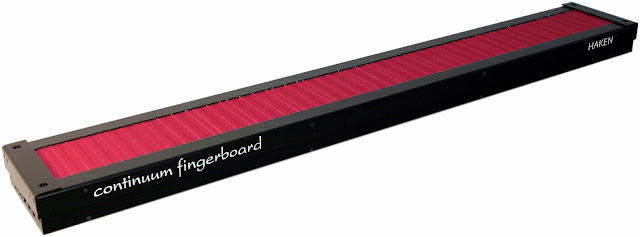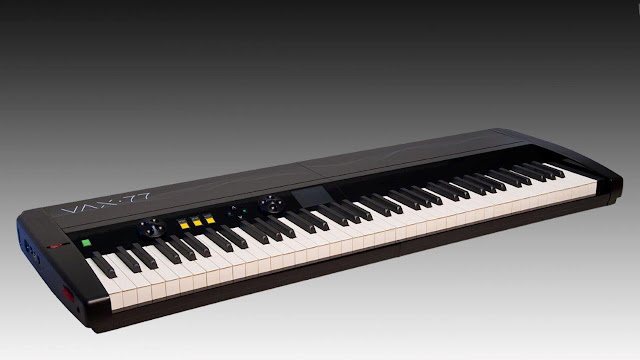What is MIDI Keyboard
A MIDI-Keyboard is piano style electronic keyboard, it consists of buttons, wheels, and sliders for sending commands over USB or MIDI-5 Pin cable to other devices connected and operating on the same MIDI Protocol. Because the basic MIDI keyboard doesn’t come with a sound engine so it does not support sound itself.
The receiving device could be:-
- a computer running a DAW or a standalone VST/AU instrument.
- a sound module.
- a digital or analog hardware instrument with MIDI capability, such as a drum machine.
Although many digital and analog keyboard in the categories mentioned above of Digital Piano, Stage Piano or Synthesizer can be used as MIDI controller if they have a MIDI capability, as a dedicated MIDI keyboard they don’t offer the same level of software integration and some MIDI mappable controls. MIDI Keyboards are often used by those who work with DAW’s and software instruments working in recording studios or concert stages.
Signal Flow: MIDI Keyboard to Audio
MIDI Keyboard à 5Pin MIDI Connector or USB à Computer running DAW or a Standalone VST Instrument or Synthesizer with MIDI capability à Audio Sound Device
Above is the example of a signal chain for MIDI Keyboard setup, with the goal of producing audio.
Class Compliance and Power Source
Class Compliance means “Plug and Play”: being plugged in and powered up, these types of MIDI Keyboards recognized by any computer. To be recognized by computers the Non- Compliant MIDI Keyboard required a keyboard specific software driver to be installed in a computer.
Keyboard Action
There is two primary type of keyboard actions: traditional and European key based instrument and non- traditional, contemporary design that allow for extended playing possibilities.
1) Traditional
In this category MIDI controllers have keys which are meant for resembling Grand Piano, Synthesizers etc.. All of these types are designed differently from the next, which gives the action a particular “feel” to the player.
a) Hammer Action
Piano style action with weighted keys- it is meant to provide resistance like an acoustic piano action.
b) Semi-Weighted Action
It is ideal for playing fast, but due to increased feedback from keys, it allows for more active playing on velocity-sensitive sound patches.
c) Waterfall Keys
These are semi-weighted keys with smoothed and round edges-these are idle for organ-specific techniques.
d) Synth Action
These are un-weighted and spring loaded, these are mostly favored by those with no piano and keyboard experience

Size And Number Keys
There is a wide range of size and number of keys of MIDI Keyboard, each one of them have their benefits and drawbacks. Some of the sizes are more common while the others are less, both in online and offline stores.
· Common
§ 25- Keys: It is the smallest keyboard available on the other hand it is also portable due to its lightweight. But is suitable only for playing one-handed piano parts such as basslines.
§ 49- Keys: It is considered the smallest keyboard size and suitable for playing two-handed piano parts effectively.
§ 61- Keys: It is an ideal size for playing two-handed piano parts.
§ 88- Keys: It is the crucial same range keyboard and have crucial same count as an acoustic piano and it is also the heaviest of all MIDI Keyboards.
· Un-common
§ 32 & 37 Keys: As compared to 49 Keys Keyboard, these are compact and easy to carry. In comparison to 25- Keys Keyboard they offer a greater range.
§ 73 & 76 Keys: As compared to 88- Keys Keyboard, these are compact and easy to carry. In comparison with 61- Keys Keyboard, they offer a greater range.
Controls(Buttons, Knobs, Faders, Wheels)
Other than keys, MIDI keyboard includes control devices which may allow manipulation of DAWS and sound generator. This controller allows the player to access DAW or alter the sound of an instrument without moving hands off the keyboard.
· Buttons: Buttons are assignable for editing menus, settings, splits, use of DAW transport controls, or octave up/down.
· Buttons: Buttons are assignable for editing menus, settings, splits, use of DAW transport controls, or octave up/down.
· Knobs: These are typically assignable to a function.
· Sliders/ Faders: Assignable to control equalizer (EQ), organ-drawbars or to control channel faders.
· Pitch Bend and Modulation: Controls pitch bending and modulation through one of several control setups
- Nord Pitch Stick & Modulation: It is a tensioned wooden stick that moves left to right for pitch bend or vice-versa.
- Two Wheels: Modulation wheel and spring-loaded pitch bend wheel.
- X/Y Joystick: It is capable of rotation in full circle and allows pitch bend and modulation which are mapped out on an X/Y plot.

Comments
Post a Comment